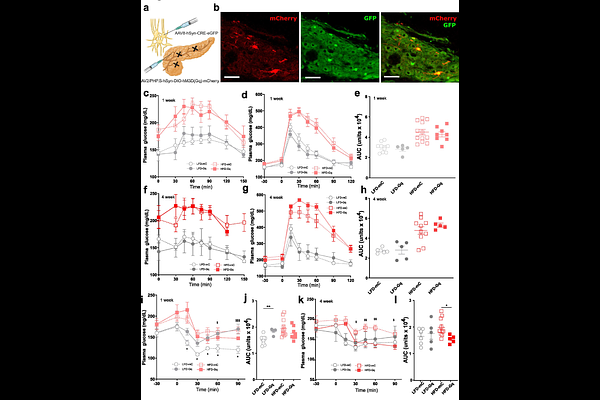Nutrient excess remodels islet autonomic innervation via pancreatic schwann cells

Nutrient excess remodels islet autonomic innervation via pancreatic schwann cells
Hampton, R.; Jimenez-Gonzalez, M.; Kang, R.; Alvarsson, A.; Espinoza, D.; Carty, J. R. E.; Seibold, F.; Lambertini, L.; Alexeyev, L.; Li, R.; Devarakonda, K.; Lu, G.; Agyapong, B.; Choudhury, J.; Krispil-Alon, M.; Scott, D. K.; Stewart, A. F.; Garcia-Ocana, A.; Stanley, S. A.
AbstractNutrient excess results in short- and long-term adaptations in the structure and function of metabolic organs, such as pancreatic islets. Pancreatic innervation contributes to islet architecture and function in many species, including humans, but little is known about its adaptation to over-nutrition. Here, we use 3D imaging to show that short-term high fat diet rapidly remodels islet sympathetic innervation while long-term high fat diet results in islet-specific cholinergic neuropathy. Using highly targeted, organ- and circuit-specific approaches, we demonstrate that remodeling of pancreatic innervation contributes to impaired glycemic control with short- and long-term nutrient excess. Counteracting the nutrient-induced changes in sympathetic and parasympathetic inputs to the pancreas using neuromodulation and repurposed FDA-approved approaches, we can significantly improve glycemic control even with long-term high fat diet. Finally, we identify islet Schwann cells as a source of the neurotrophic factor, S100b, contributing to rapid sympathetic hyperinnervation with short-term overnutrition. Our findings reveal novel adaptations in islet innervation contributing to nutrition-mediated metabolic dysfunction that can be ameliorated by targeting pancreatic neural circuits.